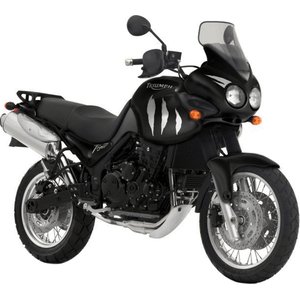Triumph Tiger 955 (2005-2006): The Versatile Triple That Defies Boundaries
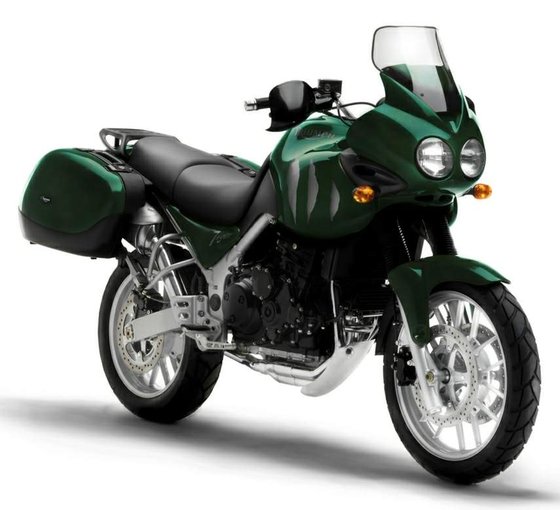
Introduction
The Triumph Tiger 955, produced between 2005 and 2006, is a motorcycle that refuses to be pigeonholed. With its rugged adventure styling, liquid-cooled 955cc inline-three engine, and touring-ready features, it’s a machine that promises—and delivers—versatility. This generation of the Tiger refined an already proven formula, offering riders a blend of British engineering charm and real-world practicality. Whether carving through mountain passes, commuting in urban sprawl, or devouring continental highways, the Tiger 955i feels at home. Let’s dive into what makes this bike a cult favorite among riders who demand a jack-of-all-trades.
Design & Ergonomics: Form Meets Function
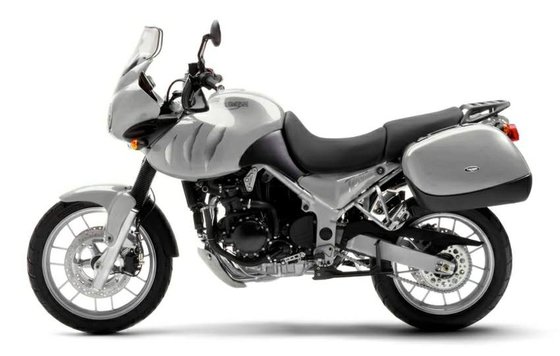
The Tiger 955’s design screams “adventure,” but with a distinctly road-focused twist. Its twin headlights, tall windscreen, and high-mounted exhaust give it a purposeful stance, while the steel perimeter frame and cast aluminum wheels (19-inch front, 17-inch rear) hint at its on-road dominance. The bike’s proportions are substantial—2,250 mm (88.6 inches) long with a 1,515 mm (59.6-inch) wheelbase—yet it carries its 215 kg (474 lbs) dry weight with a confidence that belies its heft.
The adjustable seat height (840–860 mm / 33.1–33.8 inches) accommodates riders of varying statures, though taller pilots will appreciate the commanding view over traffic. Handlebars are wide and upright, placing the rider in a relaxed, neutral position ideal for long days in the saddle. Practical touches abound: standard heated grips, handguards, and lockable hard panniers (with asymmetrical design to accommodate the exhaust) make it clear this bike is built for journeys, not just joyrides.
Engine & Performance: The Heart of a Tourer
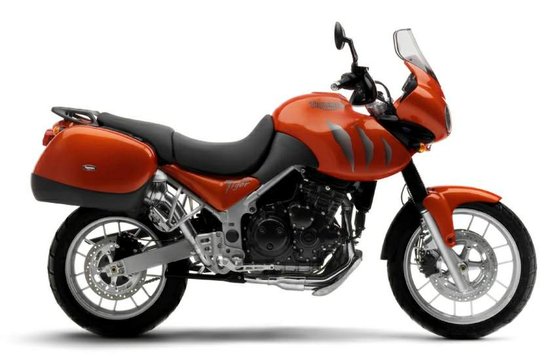
At the core of the Tiger 955i lies its 955cc inline-three engine—a detuned version of the Daytona 955i’s powerplant. Output figures are respectable: 104 hp (78 kW) at 9,500 rpm and 92 Nm (67.9 lb-ft) of torque at 4,400 rpm. While these numbers don’t scream “hyperbike,” the triple’s character is its true strength. Throttle response is linear, with torque available from as low as 2,500 rpm, making it effortless to lug in higher gears.
The fuel injection system (a rarity in its class at the time) delivers smooth power without the hiccups of carbureted rivals. On the highway, the Tiger settles into a relaxed cruise at 120 km/h (75 mph), the engine humming at 4,000 rpm. Push harder, and it’ll reward you with a top speed of 206 km/h (128 mph), though wind blast from the modest screen becomes noticeable above 140 km/h (87 mph).
The 6-speed gearbox shifts cleanly, and the X-ring final drive chain requires minimal maintenance—a boon for long-distance riders. Fuel economy averages 5.6 L/100 km (39.5 US mpg), granting a theoretical range of 430 km (267 miles) from its 24-liter (6.3-gallon) tank.
Ride Experience: Where the Tiger Shines
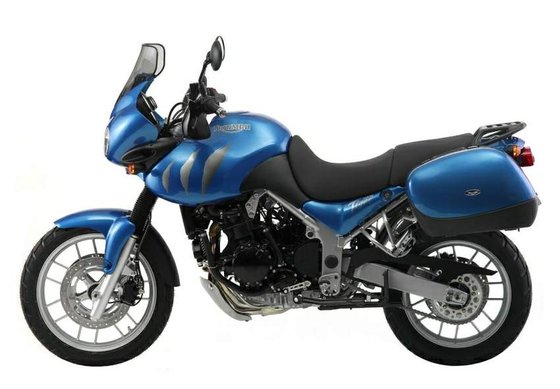
City Commuting
Surprisingly nimble for its size, the Tiger maneuvers through traffic with ease. The upright seating position provides excellent visibility, while the light clutch pull and tractable engine make stop-and-go riding a breeze. Heated grips (standard!) are a revelation in chilly weather.
Twisties & Backroads
Despite its soft suspension setup (230 mm / 9.1 inches of travel front and rear), the Tiger corners with gusto. The wide handlebars offer leverage for quick direction changes, and the Bridgestone Trail Wing tires provide ample grip on asphalt. Push too hard, though, and the suspension’s plushness becomes a liability—this isn’t a sportbike.
Highway Touring
Here’s where the Tiger truly excels. The engine’s broad torque curve allows for lazy overtakes without downshifting, while the seat (firm but supportive) and ergonomics cater to all-day comfort. Wind protection is adequate, though taller riders might opt for an aftermarket screen.
Competition: How the Tiger Stacks Up
The mid-2000s adventure-touring segment was dominated by two heavyweights: the BMW R1200GS and KTM 950 Adventure. Here’s how the Tiger 955i compares:
- BMW R1200GS: The GS’s boxer twin offered superior off-road capability and a cult following. However, the Tiger counters with a smoother engine, lower price point, and more standard features (heated grips, panniers).
- KTM 950 Adventure: KTM’s lightweight V-twin was a dirt-road demon, but its harsh ride and sparse amenities paled next to the Tiger’s refinement.
- Triumph’s Edge: The Tiger’s inline-three strikes a balance between the BMW’s low-end grunt and the KTM’s top-end zest. It’s the best road-biased option of the trio, ideal for riders who prioritize pavement performance.
Maintenance: Keeping Your Tiger Roaring
Owning a Tiger 955i is relatively straightforward, but attention to a few key areas will ensure longevity:
- Valve Adjustments: Check every 12,000 km (7,500 miles). Intake valves: 0.10–0.15 mm (0.004–0.006 in), exhaust: 0.15–0.20 mm (0.006–0.008 in).
- Oil Changes: Use synthetic 10W-40 oil (3.4 liters with filter). MOTOPARTS.store stocks OEM-spec options.
- Chain Care: The X-ring chain lasts longer with regular cleaning and lubrication. Replace sprockets (18T front, 46T rear) if worn.
- Tire Pressures: 2.5 bar (36 psi) front, 2.9 bar (42 psi) rear for optimal wear.
- Cooling System: Flush every 2 years with ethylene glycol-based coolant (2.8 liters capacity).
Common upgrades include aftermarket exhausts (for weight savings and a throatier sound), upgraded suspension components, and taller windscreens—all available at MOTOPARTS.store.
Conclusion: The Tiger’s Enduring Appeal
The Triumph Tiger 955i isn’t a specialist—it’s a generalist done right. Its three-cylinder engine charms with character, its ergonomics cater to marathon rides, and its practicality (center stand, luggage-ready design) makes it a partner for the long haul. While later Tigers have leaned further into off-road prowess, this 2005–2006 iteration remains a sweet spot for riders who value road manners above all else.
For owners looking to personalize or refresh their Tiger, MOTOPARTS.store offers everything from performance upgrades to routine maintenance kits. Because even the most versatile motorcycle deserves to be tailored to your journey.
Specifications sheet
| Engine | |
|---|---|
| Stroke: | Four-stroke |
| Max power: | 84 kW | 113.0 hp |
| Max torque: | 92 Nm |
| Fuel system: | Multipoint sequential electronic fuel injection |
| Lubrication: | Wet sump |
| Max power @: | 9500 rpm |
| Spark plugs: | NGK DPR8EA-9 or NGK DPR8EIX-9 |
| Displacement: | 955 ccm |
| Max torque @: | 4400 rpm |
| Bore x stroke: | 79.0 x 65.0 mm (3.1 x 2.6 in) |
| Configuration: | Inline |
| Cooling system: | Liquid |
| Spark plug gap: | 0.9 |
| Compression ratio: | 11.6:1 |
| Number of cylinders: | 3 |
| Dimensions | |
|---|---|
| Wheelbase: | 1515 mm (59.6 in) |
| Dry weight: | 215 |
| Wet weight: | 245 |
| Seat height: | 840–860 mm (33.1–33.8 in) |
| Overall width: | 860 mm (33.9 in) |
| Overall height: | 1390 mm (54.7 in) |
| Overall length: | 2250 mm (88.6 in) |
| Fuel tank capacity: | 24 L (6.3 US gal) |
| Drivetrain | |
|---|---|
| Final drive: | chain |
| Chain length: | 114 |
| Transmission: | 6-speed |
| Rear sprocket: | 46 |
| Front sprocket: | 18 |
| Maintenance | |
|---|---|
| Engine oil: | 10W40 |
| Idle speed: | 1200 ± 50 rpm |
| Brake fluid: | DOT 4 |
| Coolant capacity: | 2.8 |
| Forks oil capacity: | 1.31 |
| Engine oil capacity: | 3.4 |
| Engine oil change interval: | Every 5000 km or 2 years, whichever comes first |
| Valve clearance (intake, cold): | 0.10–0.15 mm |
| Valve clearance check interval: | 24,000 km / 15,000 mi |
| Valve clearance (exhaust, cold): | 0.15–0.20 mm |
| Recommended tire pressure (rear): | 2.9 bar (42 psi) |
| Recommended tire pressure (front): | 2.5 bar (36 psi) |
| Chassis and Suspension | |
|---|---|
| Rake: | 25.8° |
| Frame: | Tubular steel perimeter swingarm |
| Trail: | 92 mm (3.6 in) |
| Rear tire: | 150/70-v17 |
| Front tire: | 110/80-v19 |
| Rear brakes: | Single 285 mm disc, 2-piston caliper |
| Front brakes: | 2 x 310 mm discs, 2-piston calipers |
| Rear suspension: | Monoshock with remotely adjustable preload and rebound damping |
| Front suspension: | 43mm telescopic fork, triple rate springs |
| Rear wheel travel: | 230 mm (9.1 in) |
| Front wheel travel: | 230 mm (9.1 in) |



